05 Jun 2014
How Can Marijuana Use Lead To Heart Disease?
The use of cannabis (marijuana, hashish and hashish oil) is linked to a range of potential health problems, including diagnosable abuse and/or addiction and increased odds of experiencing some of the psychosis-related symptoms associated with schizophrenia and certain other severe mental illnesses.
In a study published in April 2014 in the Journal of the American Heart Association, a team of French researchers investigated another possible consequence of cannabis use: dysfunction in the cardiovascular (heart and blood vessel) system. These researchers concluded that young adult cannabis users, in particular, put themselves at increased risk for potentially life-threatening cardiovascular problems.
Marijuana Use Stats
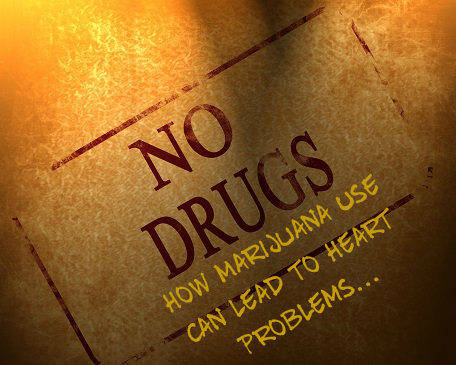 Cannabis use (particularly, marijuana use) is a relatively common form of recreational substance intake among U.S. adults and teenagers, according to figures compiled by the federal Substance Abuse and Mental Health Services Administration. In 2012 (the last year with fully available statistics), almost 19 million Americans over the age of 11 used marijuana in a given month; this number is the equivalent of more than 7 percent of the teen and adult population.
Cannabis use (particularly, marijuana use) is a relatively common form of recreational substance intake among U.S. adults and teenagers, according to figures compiled by the federal Substance Abuse and Mental Health Services Administration. In 2012 (the last year with fully available statistics), almost 19 million Americans over the age of 11 used marijuana in a given month; this number is the equivalent of more than 7 percent of the teen and adult population.
The highest rates of intake for marijuana and all other illegal or misused substances occur in teenagers and young adults between the ages of 16 and 34. Within this fairly broad age range, peak rates of use occur among individuals in their late teens or early 20s. Intake rates are lowest among very young adolescents and adults age 60 or older. Throughout the U.S., only alcohol and nicotine outrank marijuana as popular substances of abuse.
Cardiovascular Risks Associated With Marijuana Use
One of the most serious cardiovascular problems is acute coronary syndrome, a term that doctors use collectively to describe any condition that produces a rapid decrease in blood supplied to the tissues that make up the heart muscle. Well-known conditions that meet this definition include heart attack (loss of blood flow and tissue death in specific areas of the heart) and cardiac arrest (stoppage of all heart function). Acute coronary syndrome also includes a form of unpredictable chest pain called unstable angina.
In the study published in the Journal of the American Heart Association, researchers from four French institutions used information from an ongoing project called the French Addictovigilance Network to assess the cardiovascular risks faced by people who use marijuana or other forms of cannabis.
In France, this network acts as a national reporting system for all people seriously impacted by any type of substance abuse or substance addiction. The researchers looked at data gathered from 2006 to 2010. All told, 1,979 reports of serious cannabis-related harm were registered with the Addictovigilance Network during this timeframe.
The researchers found that cardiovascular problems accounted for just 1.8 percent of all cannabis-related harm. However, they also found that many of the reported cardiovascular problems were severe or potentially lethal in nature. For example, over half of the affected individuals suffered from acute coronary syndrome.
Other reported problems included complications related to the function of blood vessels located in the upper or lower limbs, as well as complications related to the function of blood vessels inside the brain. Altogether, fully 25.6 percent of the cannabis users impacted by serious cardiovascular issues died as a result of their condition.
Does Marijuana’s Negative Cardiovascular Effects Have A Greater Impact In Men?
The authors of the study published in the Journal of the American Heart Association found that the vast majority (85.7 percent) of the cannabis users affected by serious cardiovascular problems were male. On average, affected individuals of both genders were just over the age of 34. The study’s authors specifically note that young adults who use cannabis may have increased risks for potentially fatal cardiovascular issues.
In line with this conclusion, they call for wide distribution of information regarding the link between cannabis use and serious heart- and blood vessel-related harm. In addition, they call upon doctors to consider cannabis intake as a possible source or contributing factor for any cardiovascular problems found in young adult patients.
Find Out If Marijuana Is Really Dangerous Now!
Call Us Immediately If You Believe You Or Someone You Know Is Abusing Drugs Or Alcohol!
American attitudes toward drugs and drug users are changing. A few decades ago Americans wanted stiff mandatory sentencing for drug users and dealers. This has led to crowded prisons, strained state budgets and little headway in terms of changing drug behavior. A recent poll revealed that two-thirds of Americans are in favor of drug treatment rather than criminal prosecution.
Jail Or Rehab?
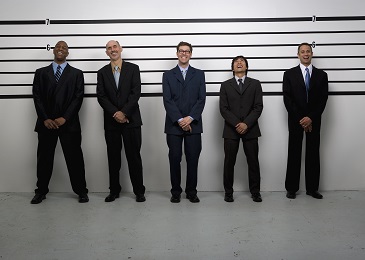 The Pew Research Center has polled the country on this subject and says that Americans would rather see offenders with no history of violence get help as opposed to jail time. Pew talked to 1,821 U.S. adults, finding that 67 percent felt the emphasis should shift toward treatment, just over 26 percent advocated for a continued focus on punishment and seven percent said they could not decide on which course was best. The poll was conducted for one week in February 2014.
The Pew Research Center has polled the country on this subject and says that Americans would rather see offenders with no history of violence get help as opposed to jail time. Pew talked to 1,821 U.S. adults, finding that 67 percent felt the emphasis should shift toward treatment, just over 26 percent advocated for a continued focus on punishment and seven percent said they could not decide on which course was best. The poll was conducted for one week in February 2014.
The two-thirds majority felt mandatory sentencing should not be applied to small scale crime, especially if it was marijuana-related. This is a significant shift in public opinion since as recently as 2001 more than half of polled Americans still supported strong penalties and prison sentencing for drug offenses, including marijuana.
The President and his administration have been lending voice to the move away from harsh mandatory sentencing. Prosecutors show less support for the idea, but so far President Obama has enjoyed Congressional support from both sides of the aisle when he suggests eliminating most mandatory sentences.
Marijuana Legalization
The poll discovered that 49 percent support the legalization of medical marijuana use, and 39 percent support legalizing recreational use. Just 16 percent maintain that marijuana should continue as an illegal substance in this country. But nearly all those polled, on both sides of the issue, expressed the belief that marijuana will eventually become a legal substance in America.
This is a notable change in public sentiment. Back in 2010 Pew reported that 41 percent supported legalization, while a majority – 52 percent – still thought the drug should be illegal. The new poll is essentially a flip of prior attitudes. At the moment medical marijuana use is legal in 20 states and recreational use is legal in two.
The prevailing attitude among Americans seems to be that a person should be free to use marijuana as long as they do it in the privacy of their own home. Even though they favor loosening the laws surrounding marijuana use, Pew reported that 63 percent did not want people to use it in public, and 44 percent did not want to have a dealer present on the street where they live.
Americans appear ready to give up on the fight against marijuana, but they still have some misgivings. Many are concerned that when marijuana is more available more young people will be likely to give it a try. And even though the country is moving away from sending drug sellers and users to prison, they still think drugs are an issue. Over 50 percent of those polled said they thought drug abuse was a “serious problem,” and just over 30 percent said drug abuse is a “crisis.”
From the White House to ordinary households, the feeling in America seems to be “let’s put small scale drug users into treatment, rather than prison.” On the one hand Americans are ready to allow fellow citizens free access to marijuana, but at the same time they worry about where that policy may lead. The majority of Americans seem to feel that fear of punishment has not been effective in reducing drug abuse and are ready to try a new approach.
Two trends in substance use are affecting the bottom line among small businesses. One is a significant increase in the abuse of prescription painkillers. The other is the increased use of marijuana as a result of increased deregulation.
According to a survey conducted by Employers Holdings Inc., one out of 10 small businesses report having employees show up to work while under the influence of at least one controlled substance, with lost productivity and potential insurance costs affecting the bottom line of the business.
Many companies require that employees provide a clean urine or blood sample both at hiring and at the discretion of the employer for random testing. However, in some cases, the employee may arrive at work visibly affected by a substance.
Prescription Drug Use
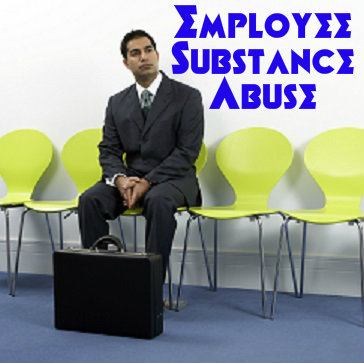 Opioid misuse has been on the rise. The U.S. Centers for Disease Control and Prevention report that more overdose deaths are now recorded for prescription opioids than for heroin or cocaine.
Opioid misuse has been on the rise. The U.S. Centers for Disease Control and Prevention report that more overdose deaths are now recorded for prescription opioids than for heroin or cocaine.
Prescription drug abuse often begins with a legitimate pain problem, often resulting from a serious injury or chronic disease. The patient may not receive adequate warnings, or they may not exercise the necessary caution in avoiding addiction to the drug.
In other cases unlocked medicine cabinets provide an opportunity for forgotten pills to be pilfered. Opioids can produce the same high as heroin, and they are a popular choice for experimentation. Many users mistakenly believe that because the drugs are obtained through a prescription from a doctor they aren’t as dangerous as street drugs.
Instead, experts say, the use of opioids can be just as dangerous as street drugs. Common reactions include a racing pulse or stroke. In some cases users may combine the drugs with other pills to make a unique cocktail and significantly increase the likelihood that they will experience negative side effects.
One potential danger of using opioids is that when a user runs out of opportunities to obtain prescription opioids from the medicine cabinets of friends and relatives the addiction may be fully developed. Buying pills on the street can be very expensive, costing $80 to $100 per pill. The remedy, in too many cases, is to start using heroin. Heroin is available and cheap, compared to prescription painkillers.
Marijuana Use Increasing
The increasing legalization of marijuana is also becoming a challenge for employers. Many don’t believe that their employees are able to work safely while under the influence, and are struggling to adequately prevent the substance from impacting their business, the safety of their employees and those they interact with on any given day.
With states beginning to allow the possession and use of marijuana, the impact is being felt by small businesses. In Colorado, where marijuana sales are booming, employers are scrambling to compensate for the impact the drug can have on their employees and their businesses.
More than half of employers surveyed even mentioned over-the-counter medications as a particular danger to employees and those around them. Three-quarters of the employers agreed that marijuana, prescription painkillers, alcohol and illicit narcotics presented a danger to their employees.
The survey was conducted by International Communications Research, who interviewed 502 small businesses that were nationally representative of small businesses that have fewer than 100 employees.
Find Out If Some Businesses Reward Drug Abuse
Doctors and public health officials know that people who use marijuana or other forms of cannabis may be affected by symptoms of depression more often than people who don’t use cannabis. People affected by depression may get involved in cannabis use because they believe the drug will make them feel better. However, they may also get involved because they knowingly or unknowingly believe that cannabis use will reinforce their dysfunctional state of mind. In a study published in March/April 2014 in the Journal of Addiction Medicine, a team of American researchers investigated whether positive or negative cannabis-related expectations best explain use of the drug in people with depression symptoms.
Depression And Treatment
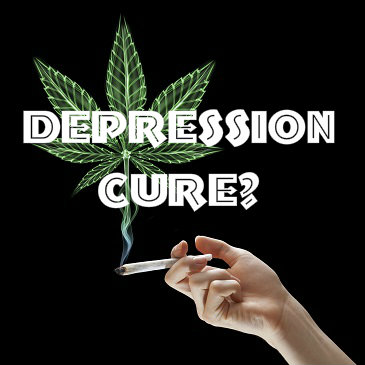 Current evidence indicates that depression is not directly related to increased chances of involvement in cannabis use. Instead, for a number of reasons—including genetic predisposition and exposure to certain environmental factors—people who receive a depression diagnosis are statistically more likely to use marijuana or some other form of cannabis than people who don’t receive such a diagnosis. In some cases, individuals already impacted by the effects of depression may turn to marijuana in an attempt to ease the strain of their mental health symptoms. In other cases, habitual cannabis users may undergo personality changes that feature depression-like effects or actual diagnosable depression symptoms. People who self-medicate their depression symptoms with marijuana or other forms of cannabis sometimes experience a temporary improvement of those symptoms; however, in the long run, this type of drug use can easily worsen existing cases of depression and leave affected individuals with a significant decline in their mental/emotional well-being.
Current evidence indicates that depression is not directly related to increased chances of involvement in cannabis use. Instead, for a number of reasons—including genetic predisposition and exposure to certain environmental factors—people who receive a depression diagnosis are statistically more likely to use marijuana or some other form of cannabis than people who don’t receive such a diagnosis. In some cases, individuals already impacted by the effects of depression may turn to marijuana in an attempt to ease the strain of their mental health symptoms. In other cases, habitual cannabis users may undergo personality changes that feature depression-like effects or actual diagnosable depression symptoms. People who self-medicate their depression symptoms with marijuana or other forms of cannabis sometimes experience a temporary improvement of those symptoms; however, in the long run, this type of drug use can easily worsen existing cases of depression and leave affected individuals with a significant decline in their mental/emotional well-being.
Drug Use Expectations
All people who drink or take drugs have expectations about the effects likely to stem from their substance use. Some of these expectations are “positive,” meaning that users believe they will feel better or otherwise gain a benefit from their intake of a given substance. Other expectations are “negative” and focus on the harms associated with the use of alcohol or drugs. As a rule, a person’s expectations influence his or her likelihood of getting involved in substance use. In real-world terms, this means that people who expect positive or beneficial results from drugs or alcohol have a higher chance of participating in substance use than people who expect negative or harmful results. In addition, positive or negative expectations of the impact of substance use can alter the ongoing experience of drug- or alcohol-related effects in active users.
Expectations In Depressed Individuals
In the study published in the Journal of Addiction Medicine, the U.S. research team used a test called the Marijuana Effect Expectancies Questionnaire (MEEQ) to assess the positive and negative expectations toward cannabis use in a group of 100 military veterans diagnosed with cannabis dependence (now known as one component of cannabis use disorder). These study participants also took another test, called the Inventory of Depression and Anxiety Symptoms (IDAS), designed in part to identify the presence of potentially diagnosable depression. In addition, all of the participants submitted information on the amount of cannabis they had consumed in the three-month period prior to the beginning of the study.
The researchers used a complex form of analysis to compare the results of each participant’s MEEQ and depression tests, and then used this comparison to help determine whether depressed cannabis users have positive or negative expectations toward intake of the drug. After completing their analysis, they concluded that cannabis use and depression are indirectly linked through positive expectations that depressed individuals hold regarding cannabis use. They did not find the same link between depression and negative expectations about cannabis use. The researchers found that the indirect link between depression and cannabis use is specifically related to a depression symptom called dysphoria, which revolves around an unusual state of unease, malaise or discomfort.
Researchers use the term indirect cause to describe contributing factors that help bring about a situation or condition, but don’t entirely account for that situation or condition like a direct cause. This means that, according to the conclusions made by the authors of the study published in the Journal of Addiction Medicine, positive expectations about the effects of cannabis help partially explain why depressed people use the drug, but don’t entirely explain why. Based on their findings, the authors believe that further examination of the impact of dysphoric depression symptoms may help broaden current understanding of why military veterans, in particular, begin using marijuana or other forms of cannabis.
14 May 2014
The Changing Face Of Heroin Addiction
Heroin abuse, addiction, and overdoses have all been rising over the last decade. New users of heroin have risen from 90,000 to 156,000 per year. The use of other drugs in the U.S. has dropped over the same time period. In addition to the overall increase in use of heroin, demographics are also shifting. Once a drug concentrated in the inner cities, heroin has spread to the suburbs and to rural areas. Today a heroin addict could be anyone of any socioeconomic status, age or race.
Who Is Using Heroin?
There was a time when you would be shocked to learn that an upstanding citizen and contributing member of society was hooked on heroin, but today the drug has infiltrated all areas of the country and all levels of society. According to one newsworthy profile, a woman who is a teacher and a mother living in Putman County, New York is also a heroin addict with track marks running down her arms. She admittedly came to work high on heroin and even used the drug in the staff bathroom during the day.
Another story tells the tale of a retired police captain moving his family from the city to the Chicago suburbs, hoping to distance his children from harmful influences. Instead of finding a more wholesome environment, his teenaged son was introduced to drugs and eventually overdosed and died from using heroin. He was not the only one among his teenage friends to meet that fate.
In Vermont, one of the most rural and sparsely populated states in the country, heroin use has reached epidemic proportions. The situation is so dire that the governor devoted an entire State of the State address this year to the issue of heroin abuse and overdose deaths. These are just a few of the stories demonstrating how the face of heroin addiction has changed over the last decade. You can no longer assume that all heroin addicts are inner city junkies. They are all around you.
What Accounts for the Rise in Heroin Abuse?
The shift in populations that use heroin and just how epidemic the problem is seem puzzling at first glance. There is a simple reason for the changes and it can be traced back to prescription painkillers. Narcotic painkillers are similar to heroin. They are both opioids, meaning they are derived from the opium poppy. They act in similar ways in the brain, produce the same kind of high and lead to the same devastating addiction.
For years, doctors have been prescribing narcotic painkillers in large amounts because they are good at what they are supposed to do: they control pain. The downside is that these medications are highly addictive and susceptible to abuse. With more prescriptions floating around and being passed and sold from one person to the next, many people became addicted. As the problem grew, doctors prescribed fewer narcotics and tighter restrictions were placed on these drugs. Those already hooked on them struggled to get the pills they needed.
Drug dealers had the answer for these narcotic addicts desperate for the next fix: cheap and available heroin. Heroin is now cheaper and easier to find than pain pills, so addicts naturally turned to this illegal drug to feed their habits. The drug cartels have seen an opportunity and have made sure to meet the demand with supplies of cheap heroin in cities, suburbs and rural states like Vermont. The face of heroin addiction has changed and unless steps are taken to treat these people and to prevent new addictions, the problem will continue to grow.
Read More About The Chronic Use Of Heroin Being On The Rise
At one time Oklahoma ranked number one in prescription drug abuse. After implementation of a statewide prescription drug monitoring program (PDMP) and the concerted efforts of lawmakers and law enforcement the state has moved down the list to number eight in the nation. But Oklahoma is not satisfied and continues to try and overcome the scourge of prescription drug abuse.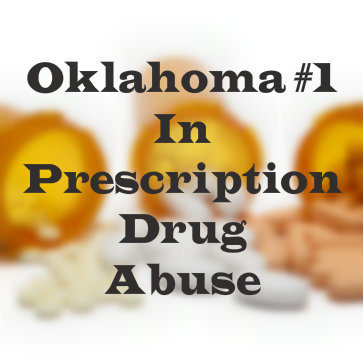
How Big Is The Prescription Drug Problem?
Last year in Oklahoma doctors and medical professionals wrote 10 million prescriptions for powerful opioid painkillers and other scheduled drugs. Those prescriptions were written to 142,369 patients, which averages out to 68 prescriptions per patient. Pharmacists filled those prescriptions with 597 million pills.
The detailed information is available thanks to the state’s PDMP, which electronically records the data. The hope is that doctors would look online before writing a prescription to see how often each patient has been given a script for heavy-duty medication. But reviewing the data it became evident that few doctors, just one-fourth, were using the PDMP prior to writing prescriptions for patients. Doctors are not yet legally required to check the PDMP first, but that could change.
Death Toll Rising
In 2012 there were 844 fatal overdoses in Oklahoma. That means that year more people died from drugs than were killed in car crashes, at 708. The majority of drug overdoses were accidental, and 75 percent involved prescription drugs.
The most dangerous prescription drugs in terms of overdose risk are opioids (e.g.: Vicodin, Lortab, OxyContin, Percocet), and the anti-anxiety medication Xanax. Too often people mix medications with alcohol, or take multiple meds at the same time. The stats show that two people per day are dying in Oklahoma because of prescription drug overdose. Deaths related to prescription drugs have risen 80 percent there in the past 10 years, and Oxycodone and Hydrocodone deaths in the state have quadrupled in that time.
The problem is most acute among 18- to 25-year-olds with a 10.9 percent abuse rate. Overall, 5.2 percent of Oklahomans over age 11 abuse the medications. Apart from the risk of fatal overdose, another concern about the epidemic of opioid abuse is where it tends to take people. Experts in the state say that around 85 percent of heroin users started out abusing prescription opioids.
Oklahoma is not unique. Across the country abuse of prescription drugs continues to claim a shockingly high number of lives. And where opioid use is beginning to drop, there is the selfsame increase in heroin use. Which makes it that much more important that we stop the problem before it moves to the street. We can monitor and prevent much prescription drug abuse through PDMPs. If we don’t, the problem will quickly transition to street drugs like heroin where monitoring and intervention is far less likely.
09 May 2014
Overdose Fatalities On The Rise In New Jersey
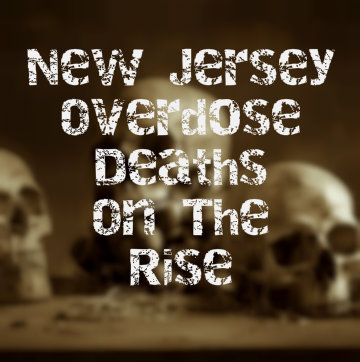 The National Safety Council (NSC) is a non-governmental, not-for-profit agency dedicated to promoting health and protecting life in the United States. The organization reports on and works to improve conditions in homes, at work and on the road. A recently published NSC report finds that drug and alcohol overdoses are the number one cause for accidental death in New Jersey – more than car accident fatalities.
The National Safety Council (NSC) is a non-governmental, not-for-profit agency dedicated to promoting health and protecting life in the United States. The organization reports on and works to improve conditions in homes, at work and on the road. A recently published NSC report finds that drug and alcohol overdoses are the number one cause for accidental death in New Jersey – more than car accident fatalities.
Like the rest of the nation, New Jersey recognized the wave of prescription drug abuse and responded strongly. State, along with federal officials, clamped down on access to prescription drugs. Making prescription drugs harder to get was seen as one way to reduce fatalities.
How Is The Problem Being Handled?
While efforts to place tighter controls has been effective to some extent, in another it may have only renamed the problem. Limited access has led to the street value of pills costing somewhere around $40 a piece, so many people simply switched to heroin, which is from the same family of drugs as prescription painkillers. It’s more powerful and less costly than it’s ever been, allowing drug abusers to switch to heroin when prescription pills are out of reach.
Substance abuse experts say that around 800,000 people in the Garden State have a drug or alcohol problem, yet just 10 percent ever ask for help. One clear way to bring down the number of accidental overdoses is to do a better job of convincing citizens to get help to break free of substance abuse.
The NSC says that the surge in overdose fatalities combined with the number of falls by senior citizens makes New Jersey homes the number one danger zone. New Jersey is not alone, however. Alcohol and drugs were reported as the leading cause of death in 20 states across the nation.
An opioid overdose is a situation that occurs when a person using an opioid drug or medication takes too much of the substance in question and experiences a serious slowdown or complete halt of certain critical body functions. Some people die from such an overdose, while others survive after receiving treatment. In a study scheduled for publication in April 2014 in the journal Mayo Clinic Proceedings, researchers from Harvard-affiliated Massachusetts General Hospital looked at the potential health outcomes for people who experience repeated opioid overdoses. These researchers also examined the factors that make repeated opioid overdoses more likely to occur.
What Are Opioids?
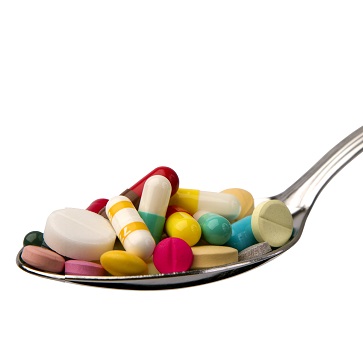 n addition to producing a pleasurable sensation called euphoria and diminishing the ability to feel physical pain, opioid drugs and medications slow down the baseline rate of activity inside both the brain and the spinal cord (known collectively as the central nervous system). If a legitimate opioid user or opioid abuser or addict keeps his or her intake within certain limits, he or she will experience only fairly modest changes in the function of these organs, which together produce and coordinate the nerve impulses required to keep the heart beating and the lungs inhaling and exhaling. However, if he or she takes too much of the opioid in question, central nervous system activity will fall below a critical point and the required nerve impulses will not be maintained. This dangerous and potentially lethal nerve signal disruption marks the onset of an opioid overdose. People who die from such an overdose typically experience an unsustainable decrease in their normal lung function.
n addition to producing a pleasurable sensation called euphoria and diminishing the ability to feel physical pain, opioid drugs and medications slow down the baseline rate of activity inside both the brain and the spinal cord (known collectively as the central nervous system). If a legitimate opioid user or opioid abuser or addict keeps his or her intake within certain limits, he or she will experience only fairly modest changes in the function of these organs, which together produce and coordinate the nerve impulses required to keep the heart beating and the lungs inhaling and exhaling. However, if he or she takes too much of the opioid in question, central nervous system activity will fall below a critical point and the required nerve impulses will not be maintained. This dangerous and potentially lethal nerve signal disruption marks the onset of an opioid overdose. People who die from such an overdose typically experience an unsustainable decrease in their normal lung function.
The United Nations Office on Drugs and Crime lists a number of common contributing factors to an opioid overdose. These factors include widespread access to both legal and illicit/illegal opioid substances, the use of opioids in combination with other mind-altering substances, limited access to treatment options for people addicted to opioid substances and an increased susceptibility to the effects of opioids in people who relapse back into drug/medication abuse after a period of full or partial abstinence. All individuals who abuse opioids run the risk of experiencing a fatal or non-fatal overdose, whether or not they have an addiction to opioid use.
Repeated Overdose Consequences
In the study scheduled for publication in Mayo Clinic Proceedings, the Massachusetts General Hospital researchers used information gathered from close to 20,000 adult opioid users to assess the health consequences of experiencing more than one non-fatal opioid overdose. All of these individuals had survived at least one overdose event involving a legal or illegal opioid; 1,400 of them had survived two to five such events. Although they represented only 7 percent of the study participants, the survivors of multiple events represented roughly 15 percent of the total number of overdoses among the participants. After comparing the single overdose survivors to the multiple overdose survivors, the researchers concluded that the multiple overdose survivors are significantly more likely to require hospitalization to deal with the effects of their condition. Once hospitalized, they are also significantly more likely to require breathing assistance from a ventilator to stay alive.
Repeated Overdose Factors
The researchers concluded that several factors contribute to the likelihood that a person will experience more than one opioid overdose. These factors include having relatively few financial resources, having public health insurance rather than private health insurance, having a diagnosable case of substance addiction, having a diagnosable mental illness, having an illness that affects normal nervous system function and having a chronic lung illness. The single demographic category most likely to experience multiple opioid overdoses is middle-aged white men.
The authors of the study scheduled for publication in Mayo Clinic Proceedings note that first-time cases of opioid overdose also frequently result in hospitalization. People undergoing additional overdoses merely have a higher chance of being hospitalized. First-time victims of opioid overdoses also sometimes require the use of a mechanical ventilator. Again, victims of multiple overdoses merely have greater odds of needing this extreme medical measure. The study’s authors believe that their findings point toward a need to improve local, state and nationwide efforts to lower the opioid overdose rate. They also point toward a need for improved understanding of the factors that contribute to overdose in people using prescribed opioid painkilling medications.
Read About IV Opioid Users Show Interest In Buprenorphine Treatment


